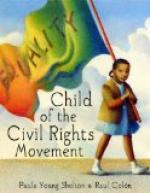|
This section contains 1,283 words (approx. 5 pages at 300 words per page) |

|
In 1924 the League of Nations adopted a Declaration of the Rights of the Child. It was not legally binding, but set forth principles that marked a shift in legal and cultural understandings of children. Children in many societies had, for centuries, been viewed as little more than their fathers' property. In the nineteenth and early twentieth centuries, long working hours under hazardous conditions were the lot of millions of children in industrializing nations. Problems of domestic physical, sexual, or psychological child abuse were absent from public discussion.
Since the 1950s children's rights have attracted greater attention. In 1959 a second Declaration of the Rights of the Child was adopted, this time by the United Nations (UN) General Assembly. Like the 1924 Declaration, it was not legally binding, but was more detailed in content, signaling further recognition of children as rights holders under international law...
|
This section contains 1,283 words (approx. 5 pages at 300 words per page) |

|


